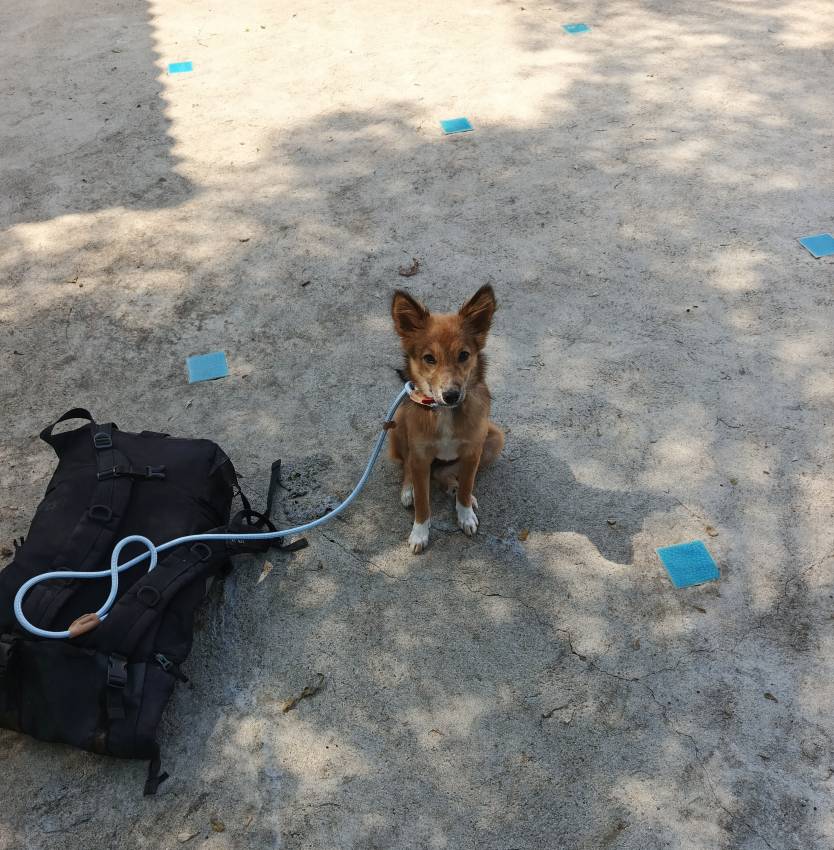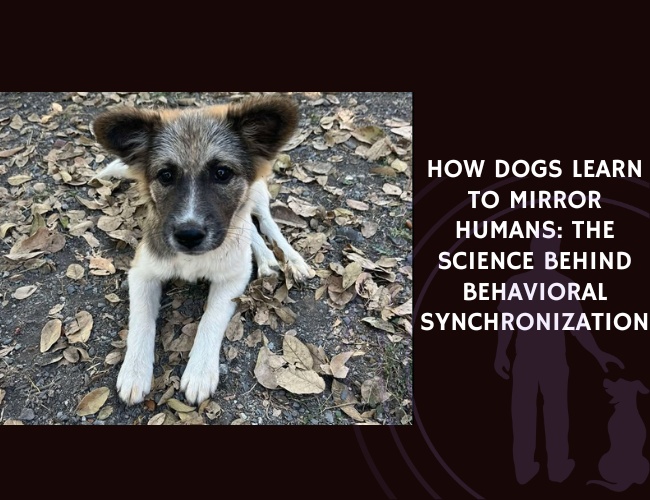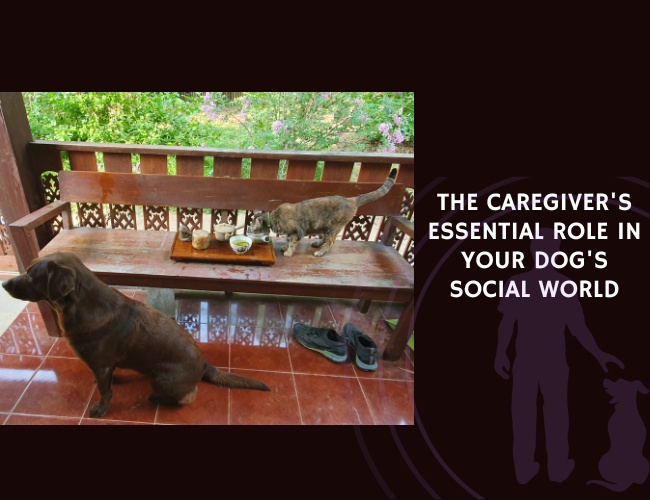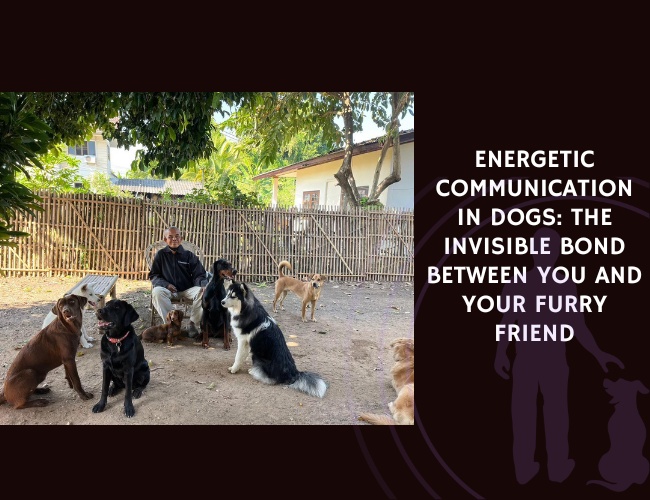Introduction: Understanding Behavioral Synchronization
What Is Behavioral Synchronization?
Behavioral synchronization is the process where dogs mirror or align their behavior with humans. This alignment can include copycat actions like walking in step, looking where you look, or showing similar emotional reactions. Rather than simply copying, dogs show a real-time understanding of our actions, intentions, and feelings. It’s an informative, professional, and supportive indicator of how closely bonded dogs and humans can become through daily interactions.
Why Behavioral Synchronization Matters
The significance of behavioral synchronization goes far beyond fun tricks or cute moments. When dogs synchronize with us, it builds a shared language that makes living together smoother and more enjoyable. For example:
- Dogs matching our walking pace make walks less stressful and more coordinated.
- They learn to look at objects we’re paying attention to, helping with tasks or play.
- Emotional alignment, like a dog calming down when you relax, supports your well-being and theirs.
Through these behaviors, synchronization creates a powerful, supportive connection. This bond isn’t just emotionally satisfying—it serves practical goals in training, safety, and daily routines. A strong synchrony means your dog is tuned into you, making them a better companion and even improving their welfare.
Communication and Bonding Through Synchronization
At the heart of behavioral synchronization lies a unique form of communication. Dogs use subtle cues—posture, gaze, or timing—to respond thoughtfully to our actions. This goes both ways, as we also adjust our behavior for them. The informative feedback loop helps both parties understand each other better. Over time, this process builds trust, deepens attachment, and encourages attentive, affectionate relationships.
Behavioral synchronization is a two-way street shaped by trust, patience, and positive interaction. Recognizing its role in communication helps us appreciate the professional care and commitment needed in our interactions.
As we move forward, keep in mind how these early steps can blossom into more complex forms of synchronization, enriching everyday life together.
Types of Behavioral Synchronization in Dogs
Understanding how dogs align their actions with humans is both informative and eye-opening. This behavior is not only fascinating but also reflects the strong bond and mutual understanding between a dog and its person. Let’s explore the different ways dogs synchronize with us and what these mean for daily life.
Locomotor Synchronization: Walking in Step
Have you ever noticed how your dog seems to fall into step with you during walks? This is called locomotor synchronization. Dogs naturally adjust their walking speed and direction to match their humans. Pet dogs, for example, show strong synchronization, walking closely and changing pace when their guardians do. In comparison, shelter dogs might keep more distance and show weaker alignment, likely due to less exposure to consistent handlers. This effect isn’t just unique to dogs—similar patterns are seen in horses and their handlers too.
Attentional Synchronization: Sharing Focus
Attentional synchronization is when dogs and humans share attention, like following a gaze or looking at the same object. When you turn to look at something, your dog often does too! This shared attention is an important building block for communication. It means your dog is aware of what you are interested in and is actively paying attention, creating professional and supportive teamwork in everyday tasks.
Emotional and Physiological Synchronization: Feeling Together
Dogs don’t only align their actions; they match emotional states with us as well. This is called emotional and physiological synchronization. For example, if you are feeling excited, your dog may become more playful. When you feel stressed, your dog’s heart rate and cortisol (the “stress hormone”) levels might also rise. Research even shows that cortisol and other hormone levels can mirror between dogs and owners, highlighting how tightly bonded these relationships are [Development of Behavioral Synchroni.txt]. This emotional closeness is both informative and supportive, helping dogs and humans co-regulate during stressful or happy times.
With these foundations of synchronization, it becomes clear why early experience and positive interactions are vital for building strong dog-human relationships.
Developmental Timeline: How Synchronization Emerges
Neonatal Beginnings: 0–2 Weeks
Right after birth, puppies are mostly focused on survival. During these first two weeks, their eyes and ears are closed, and their basic needs—warmth, food, and safety—are met by their mother. Synchronization with humans at this stage is practically nonexistent. Any interaction is reactive and centered on instinct. Puppies lack the ability to mirror or connect with human actions, so behavioral alignment is very limited.
Socialization Spark: 3–14 Weeks
Things start to change fast during the critical period from three to fourteen weeks old. This is when puppies open their eyes to the world—both literally and socially. Human contact and gentle handling boost responsiveness. Puppies begin to recognize and associate human voices, actions, and routines with rewards like food, playtime, and affection. They actively learn how their own actions (like following, looking, or waiting) connect with human behavior.
Early exposure to positive experiences is key. Puppies who meet lots of people, see new environments, and get positive reinforcement (like praise or treats) become great at mirroring human cues. Informative and professional training during this time is supportive, setting the groundwork for strong bonds and safe social skills. On the flip side, puppies that lack socialization may become fearful or less able to synchronize with people later on.
Growing Up: Juvenile and Adolescent Stages
After the socialization window, synchronization skills continue to grow. Juvenile and adolescent dogs begin honing these skills through practice—training, play, and daily routines with their people. They get better at picking up on subtle human cues and adjusting their own behavior. For example, they may start waiting by the door when you pick up your keys or syncing their pace during walks.
Positive feedback in training (treats, praise, play) further encourages these behaviors, helping to turn good responses into lifelong habits. Emotional bonds deepen, and routines get smoother, as dogs and humans learn to anticipate each other’s moves.
Understanding these stages helps everyone give puppies what they need to become happy, synchronized companions.
The Critical Role of Early Socialization
Why Socialization Matters for Synchronization
Early socialization is an informative and supportive foundation for a dog’s future interactions with humans. Puppies go through a sensitive socialization window between 3-14 weeks old. During this time, positive, consistent human contact has a professional impact on the development of behavioral synchronization—the ability to mirror movement, gaze, and even emotional states. Well-socialized puppies who meet many people and experience friendly situations build lifelong habits of tuning in to human cues. This shapes how they move with us, focus when we point out objects, and even react emotionally in a shared environment.
The Impact of Early Human Contact
Professional research shows that dogs exposed early and frequently to different humans and situations are better at aligning their behavior. They pick up on our walking speed, follow our gaze, and respond to our moods with more confidence and trust. These dogs are not just good at copying; they show higher motivation to collaborate. When a dog receives kind, encouraging feedback during their first weeks and months, this leads to a deeper sense of trust and makes learning new things much easier.
The Consequences of Missed Socialization
If puppies do not get enough positive interaction with people in this critical stage, the supportive pathway to synchronization can break down. Dogs with limited socialization may develop fear around people, struggle to read human signals, and find it difficult to connect emotionally. As a result, walking together feels out of sync, training becomes frustrating, and the dog may appear detached or anxious. In severe cases, avoiding human contact or even aggression can develop.
The Power of Positive Reinforcement
Positive reinforcement—rewarding good behavior with treats, praise, or play—has an informative and professional effect during this sensitive period. It helps puppies associate human attention and new experiences with positive outcomes. This builds the foundation for relaxed, confident interactions and enhances synchronization skills. Small, consistent rewards make a puppy more willing to watch, follow, and trust their person—a relationship that supports both effective training and a strong lifelong bond.
The significance of socialization sets the stage for understanding how daily experiences and specialized training can further shape and refine a dog’s synchronization abilities.

Experience-Dependent Plasticity in Synchronization
How Training Shapes a Dog’s Ability to Sync with Humans
Professional and supportive training is key to unlocking a dog’s potential for behavioral synchronization with people. Positive, relationship-based approaches, such as using treats or praise, help dogs learn that mirroring human cues like walking pace or gaze leads to good outcomes. Training sessions build not just obedience, but a richer, more informative social bond. Consistent reinforcement also makes dogs more likely to anticipate a person’s next move, making routines feel like teamwork rather than chores.
Routine activities, such as daily walks or feeding times, further shape synchronization. Dogs quickly learn to read subtle cues, like a person reaching for a leash or putting on shoes, and prepare themselves in response. This ability to anticipate and mirror behavior is experience-dependent plasticity in action—a dog’s brain adapts based on repeated, supportive interactions. This creates harmony and a sense of security in both dogs and humans.
The Power of Daily Life and Shared Activities
Simple shared routines are highly informative for dogs. For example, walking at the same rhythm or playing fetch at set times every evening allows dogs to pick up on daily patterns. Over time, these repeated experiences lead to strong anticipatory behaviors, such as your dog sitting by the door before you grab your keys. The more predictable and caring these routines, the greater the bond and synchronization.
Working Dogs: Enhanced Synchronization Through Specialized Training
Some dogs, like service or therapy dogs, undergo professional, specialized training designed to take behavioral alignment to the next level. These dogs must read their handler’s emotions, follow complex instructions, and adjust instantly in real time. Intensive and supportive training gives working dogs the tools they need to demonstrate advanced synchronization, far beyond what is needed for daily pet life. Regular, structured practice cements these abilities, making working dogs reliable partners in all types of environments.
When dogs’ experiences are rich, positive, and consistent, their ability to synchronize with humans flourishes. This expanded skillset only deepens the connection and creates lasting harmony. With a strong foundation of training and daily routines, dogs become true collaborative partners in all walks of life.
Individual and Breed Differences in Synchronization
How Breed Shapes Dog-Human Synchrony
Have you ever noticed that some dogs seem to read your movements like an open book, while others are delightfully independent? Breed selection plays a key role in how dogs synchronize with humans. Dogs bred for cooperation—like herding breeds—often display stronger behavioral alignment with people. These breeds, originally chosen for their attentiveness and quick response to handlers, are naturally more in tune with our cues. On the other hand, dogs bred for independent tasks, like many hunting or scent breeds, may show less immediate synchronization. This difference is not about intelligence but about what the dogs were selected to do throughout history.
For example, herding dogs may quickly match your pace or direction during walks, while independent breeds might pause to sniff more, showing less concern for what their person is doing.
Together. Aligned. Real.
When your dog doesn’t just follow but truly tunes in, real partnership begins. Synchronization isn’t just training—it’s unspoken communication.
Shared routines, mutual attention, walking in step—learn how to create a connection that makes everyday life feel like teamwork.



Whether puppy or adult, synchronization starts today. Build a deeper bond with mindful moments and positive guidance.
Personality and Temperament: The Individual Touch
While breed gives a broad outline, each dog’s personality colors the picture further. Some dogs are simply more sociable or calm, making them naturally inclined to mirror human emotions and actions. Other pups might be more self-reliant or reserved, choosing when to synchronize based on mood or context.
These temperament traits—like curiosity, sociability, and adaptability—shape how willing and able a dog is to pay attention and match your behavior. Strong attachment security also makes a big difference: dogs that feel safe and connected tend to be more responsive, enhancing the supportive and professional nature of your relationship.
Motivation and Attachment: Building Bonds
A dog’s motivation—what gets their tail wagging—shapes synchronization, too. The bond between dog and owner, built on trust and positive experiences, encourages dogs to seek connection. Secure attachment leads to higher motivation to pay attention, anticipate routines, and match emotional states. When you give clear, consistent signals and show understanding, your dog feels more confident and eager to be “in sync.”
So, whether you have a cuddle-loving retriever or an explorer terrier, understanding these differences can help create the most informative, supportive, and professional partnership possible.
Exploring these factors shows the beauty and variety in our relationships with dogs, laying the foundation for deeper insight into dog-human harmony.
Research Methods in Studying Dog-Human Synchronization
Behavioral Observation and Structured Tasks
Understanding how dogs and humans synchronize starts with careful observation. Informative protocols use structured tasks, such as guided walks, timed “sit” commands, or gaze-following exercises, to spot patterns of alignment. Professional researchers might watch how quickly a dog matches a handler’s pace or responds to a directional cue. These structured tasks allow for supportive comparisons between dogs raised in homes, shelters, or trained as working companions.
Behavioral observation can reveal both detailed timing and subtle social cues. Observers record things like:
- How closely a dog stays beside their person.
- How quickly the dog responds to attention-getting signals, like pointing or calling.
- Whether the dog looks in the same direction or follows the person’s gaze.
This informative approach is foundational—it helps pinpoint small successes or breakdowns in dog-human communication.
Technology-Assisted Data Collection
Technology plays a big role in making studies more precise and professional. Motion tracking uses wearable devices or nearby sensors to measure the movement of both dogs and humans. This gives supportive, real-time data about walking rhythm, turning speeds, or how often they stop together.
Video analysis is also informative. It allows researchers to rewind and review every step of a shared walk or training session. Subtle movements that might be missed in person—like quick glances or coordinated pauses—are easy to spot on camera.
Proximity sensors add another layer. These small devices measure the distance between dog and handler over time, showing how physical closeness changes with training, stress, or excitement. This professional insight helps trainers and pet parents support a stronger, safer bond.
Physiological Measures
Dog-human synchronization isn’t just about movement and attention—it’s also about what happens inside the body. Researchers use supportive measures like monitoring heart rate, tracking cortisol (the stress hormone), or measuring oxytocin (the bonding hormone). These informative tools reveal when a dog and their human share relaxed moments or stressful situations together.
When heart rates rise and fall in sync, or stress hormones drop at the same pace, it provides scientific proof of a deep emotional connection. This professional understanding supports better animal welfare and training.
With a variety of research tools available, more engaging and supportive insights are emerging about the true depth of our partnership with dogs.
Practical Applications of Behavioral Synchronization
Enhancing Dog Training Techniques
Understanding behavioral synchronization helps trainers and pet owners strengthen relationships with their dogs. Dogs naturally try to align their movements and responses to those of their human companions. By using positive reinforcement and relationship-based methods, training becomes more effective and enjoyable for both sides. Consistent routines, like group walks and daily activities, teach dogs to anticipate human actions, improving communication and trust. This professional and supportive approach makes training informative and motivates dogs to be more attentive and responsive.
- Consistent praise and rewards build shared habits.
- Short, repetitive sessions encourage collaboration and confidence.
- Calm environments help dogs focus on matching human cues.
This supportive strategy not only enhances obedience but also deepens the emotional bond between dog and owner, leading to lasting results.
Selecting and Training Service and Therapy Dogs
Not all dogs are born with the same skills for synchronization. Service and therapy dogs, for example, should be especially attuned to their handlers’ movements and emotions. Synchronization becomes an important factor in selecting these special dogs. Breeds with a history of cooperation (such as herding breeds) are often more successful due to their natural responsiveness. During selection, professionals look for signs of anticipation, focus, and calmness when paired with humans.
After selection, specialized training helps these dogs develop advanced synchronization abilities. Daily routines and shared tasks, like structured walks or joint play, make the bond stronger and allow dogs to adjust quickly to new environments and human partners. This professional focus ensures dogs provide necessary support to individuals in need, making their work more reliable and effective.
Improving Dog Welfare and Human-Animal Bonds
Behavioral synchronization is not just about training; it’s an indicator of a dog’s well-being. Strong synchronization shows that a dog feels secure and connected to people. On the other hand, weak alignment may signal stress, fear, or poor socialization. By observing synchronization, owners and professionals can identify issues early and adjust care or training as needed.
When humans understand and encourage synchronization, it leads to healthier, happier dogs. The benefits are mutual: people gain loving, loyal companions, and dogs enjoy greater emotional comfort and stability. This enriching connection makes the dog-human relationship more meaningful every day.
With this foundation in place, let’s keep generating informative insights and supportive guidance for fostering strong dog-human partnerships.
Conclusion: The Future of Synchronization Research
Key Learnings on Behavioral Synchronization
Over the course of our journey, we discovered that dogs develop behavioral synchronization—a special skill allowing them to mirror human movements, attention, and even emotions. This bond is built on a foundation set early in life, with the 3-14 week socialization window playing a crucial role. Supportive caregivers who provide consistent positive contact help dogs become more attentive, responsive, and secure. Professional training and routines further increase a dog’s ability to anticipate and align with human actions, making both everyday life and special jobs like service work possible.
Breed and personality matter, too. Herding breeds, for instance, naturally tune in to human cues, while a dog’s sociability and attachment security boost their willingness to synchronize. Not all dogs are the same—but every dog can improve with informative, professional, and supportive guidance.
Future Directions in Research
There’s still much to learn. Upcoming work will likely focus on:
- Fine-tuning training methods so every dog can reach their synchronization potential
- Finding the best ways to select and prepare service or therapy dogs
- Assessing a dog’s welfare by measuring how closely they synchronize with their human partner
- Translating research into simple educational tools for pet owners
- Using technology (like motion trackers and hormonal tests) to get clearer, real-time insights into dog-human interactions
These efforts aim to make dog training more effective and compassionate for every dog and owner.
Broader Impact on Human-Animal Relationships
This research teaches us that our relationship with dogs is more than just cohabitation—it’s a dynamic, emotional partnership. As we continue to unlock the secrets of synchronization, we will improve dog welfare and strengthen the support, trust, and companionship people find in their furry friends. High-quality, informative research makes all the difference, and a professional yet supportive approach ensures both dogs and people thrive together.









